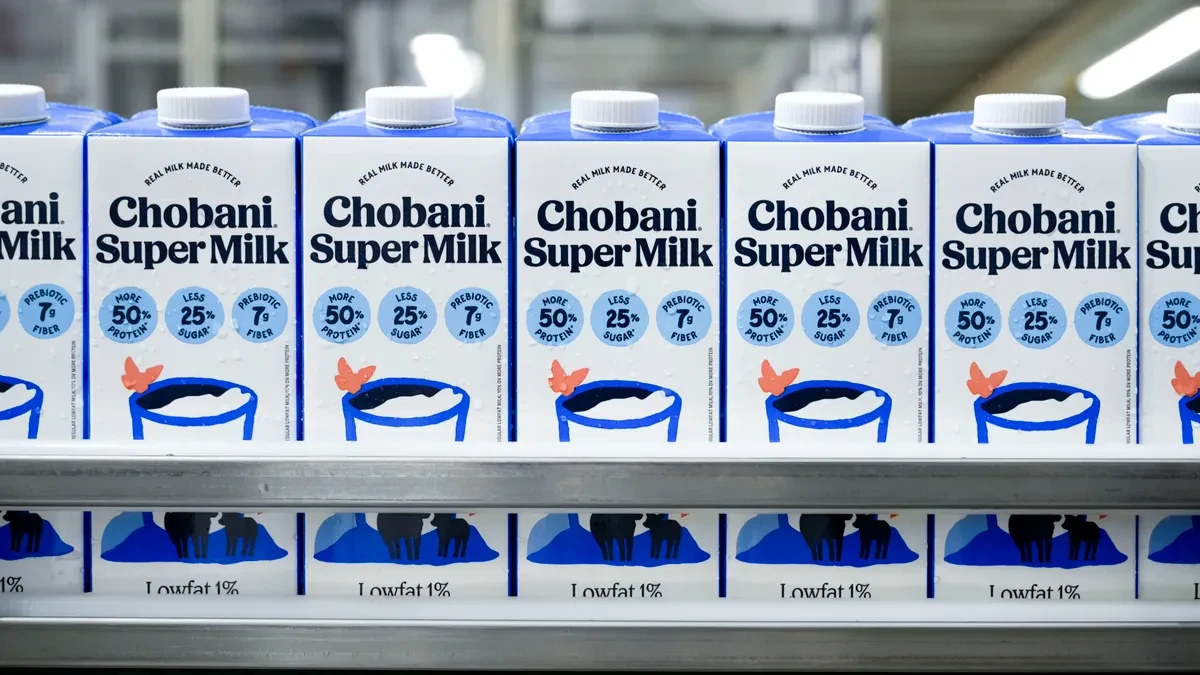Find out how the drop in cold storage cheese affects you. Are you ready for the changes? Learn more now.

Understanding the market dynamics, particularly the trend of diminishing cold-storage cheese stockpiles, is crucial for dairy professionals. Given the prospective price and production implications for dairy farmers and industry experts, this understanding allows for informed decisions and strategic adaptations. Cold storage levels serve as a supply and demand barometer, providing early insights into changes. A drop in these levels often signals increased customer demand or decreasing output, presenting distinct challenges. The impact of rising consumer demand, production challenges, and changes in export markets and trade rules on this decreasing trend underscores the need for vigilance. By monitoring these inventories, you can stay ahead of the competition, effectively manage market shifts, and make sound operational choices.
Cheese Inventories in Cold Storage: Navigating Complex Dynamics
| Month | Total Cheese Inventory (Million lbs) | Change from Previous Month (%) | Change from Previous Year (%) |
|---|---|---|---|
| January 2023 | 1,400 | -1.5% | -3.0% |
| February 2023 | 1,385 | -1.1% | -2.8% |
| March 2023 | 1,375 | -0.7% | -2.5% |
| April 2023 | 1,360 | -1.1% | -2.0% |
| May 2023 | 1,350 | -0.7% | -1.8% |
Cheese stockpiles in cold storage have lately seen significant changes. According to the most recent estimates, total cheese inventory has reached 1.44 billion pounds, an increase of 5.9 million pounds since November. However, this beneficial rise conceals underlying complications that influence the industry’s dynamics.
The fluctuating demand for cheese is a significant contributor to changes in inventory. Current cheese demand varies from higher-than-average to levels commensurate with past years. This changing demand influences how much cheese ends up in cold storage.
Furthermore, changes in warehouse investment patterns affect inventory levels. Investors had previously projected a gap of 150 to 250 basis points over ambient warehouse cap rates, which has now narrowed almost wholly. This move mirrors a more significant trend of increased warehouse automation. By 2027, more than one in every four warehouses will have some automation. Automated methods improve efficiency while also requiring substantial changes in inventory management.
| Month | Butter Price (per lb) |
|---|---|
| January 2024 | $2.50 |
| February 2024 | $2.53 |
| March 2024 | $2.57 |
| April 2024 | $2.60 |
| May 2024 | $2.62 |
| June 2024 | $2.65 |
Another aspect is the butter market, where butter prices recently closed at $2.76 per pound, their highest level since November 8, 2023. Fluctuations in related dairy product markets may impact cheese stocks as producers and storage facilities react to variations in demand and pricing in the overall dairy industry.
Understanding the characteristics of the changing cheese inventory landscape is not enough. Dairy professionals must adapt their strategies to stay competitive in the dairy market. They can better manage the changing cheese storage and distribution environment by focusing on demand patterns, investment adjustments, and other market moves.
Adjusting to Shifts in Cheese Inventories: Strategic Adaptations for Dairy Farmers
Reducing cheese inventory significantly influences dairy producers’ milk demand, price, and production plans. When stocks fall, it indicates strong market demand, which might lead to higher milk prices. This increase in income might help your business, but you must remain adaptive.
One essential tactic is to stay abreast of market changes and collaborate with milk processors regularly. This proactive approach, coupled with managing supply based on processing demands, empowers you to modify production numbers without overwhelming the market. Furthermore, increasing the butterfat content of your milk, which is currently at record levels, might increase its value, given current trends preferring more significant component premiums.
Consider embracing developments in cold storage technologies. With increased automation and the emergence of third-party logistics providers, there is a potential to expedite distribution, decrease waste, and optimize storage costs. Engaging with updated warehouses that utilize these technologies may result in improved storage solutions and distribution efficiency, fostering a sense of optimism and forward-thinking in the industry.
Finally, while U.S. cheese stays internationally competitive, maintaining high-quality manufacturing standards may lead to more export potential. Diversifying your market reach helps protect against domestic changes, resulting in a more reliable revenue stream.
Understanding these factors and taking preemptive actions will allow you to negotiate the complexity of lower cheese inventories while continuing to prosper in the new dairy industry.
Strategic Implications for Processors, Distributors, and Retailers
The repercussions for industry experts are numerous, impacting processors, distributors, and retailers. Processors must prepare for anticipated adjustments in production schedules since changes in cheese stockpiles might influence demand predictions. Efficient cooperation with distributors is even more critical in mitigating possible obstacles. The changing environment may force distributors to reconsider their logistics strategy because more than one in every four warehouses is expected to embrace automation by 2027. Streamlined procedures and technical developments may provide a competitive advantage.
On the other hand, merchants must maintain flexibility in their pricing and inventory management techniques. Since American cheese is now the most cheap in the world, there is a chance to capitalize on this price advantage in the worldwide market. However, fluctuations in domestic stocks and production dynamics may strain the ability to sustain stable supply. Retailers may need to design more flexible inventory systems with real-time data analytics to keep ahead of market trends.
Understanding the complex dynamics of the dairy business landscape is one thing, but proactively adapting tactics will be critical for all stakeholders. This proactive approach is essential for navigating the present and future dairy business landscapes.
Decreased Cheese Inventories Bring a Mixed Bag of Economic Ramifications for the Dairy Sector
Decreased cheese inventories have conflicting economic consequences for the dairy industry. On the one hand, smaller stocks may increase demand and even raise cheese prices, boosting your short-term profitability. However, this circumstance also causes market volatility. Price rises may cause consumers to switch to alternative items, undermining market stability.
From an investment viewpoint, changing cheese stockpiles may cause you and other industry experts to rethink or postpone capital investments. The diminishing gap between ambient warehouse cap rates and cold storage investments has almost vanished, suggesting a changing scenario. More predictable markets often see a spread of 150 to 250 basis points over ambient warehouse cap rates. Still, recent trends indicate that this gap has narrowed to almost nil, confounding investment considerations.
Furthermore, the likelihood of increased automation in cold storage facilities—expected to be present in more than one of every four warehouses by 2027—adds another degree of complexity. Automation can potentially increase productivity and reduce costs but requires a considerable initial investment. Careful study and strategic planning will be needed as these improvements progress.
Lower cheese inventories need a multifaceted approach to economic planning. By being educated and adaptive, you’ll be better equipped to handle these changes and make sound choices that will benefit company operations in the long term.
Emerging Trends and Strategic Innovations in Cheese Inventory Management
Looking forward, the cheese inventory and management landscape is set to change significantly. With technology improvements, especially in automation, forecasts show that more than one in every four warehouses will have some automation by 2027. This change might simplify operations, save costs, and alleviate labor shortages, giving dairy processors and distributors a competitive advantage.
Furthermore, the present high butterfat percentage of U.S. milk, which hit an all-time high of 4.28% in November, plays a significant influence. Enhanced milk components may boost cheese production, thereby balancing inventory levels despite fluctuations in demand. This provides an opportunity for processors to innovate and adapt to a variety of customer preferences.
Another element to examine is worldwide market dynamics. With US cheese now the most cheap in the world, there is an excellent chance of additional export possibilities. Improved global positioning might reduce domestic inventory demands while maintaining industry stability.
However, the economic implications must be addressed. The shrinking gap between ambient and cold storage facility cap rates may reduce profit margins for businesses investing in cold storage infrastructure. Navigating these economic issues will need innovative thinking and inventive ways.
While the future contains many obstacles, advances in automation, high butterfat content, and worldwide affordability of American cheese provide intriguing opportunities for expansion and adaptability. Staying adaptable and sensitive to these changing dynamics will be critical for dairy farmers and industry experts.
The Bottom Line
The changing environment of cheese inventory and cold storage highlights the importance of education and adaptability. As cheese stockpiles vary, dairy farmers and industry experts must be alert and responsive to market changes. Investing in education and encouraging teamwork will be critical to managing these changes successfully. Staying ahead of the curve and adopting new methods helps guarantee resilience and long-term success in the ever-changing dairy sector.
Key Takeaways:
- Current cheese inventories have decreased, impacting supply dynamics.
- Market prices are experiencing fluctuations due to lower stock levels.
- Dairy farmers may need to adjust production rates accordingly.
- Processors and distributors should anticipate potential shifts in demand.
- Strategic planning and innovation are crucial to navigating these changes.
Summary:
The dairy sector is experiencing a decline in cold-storage cheese stockpiles, which could impact market dynamics, price, and production implications. Rising consumer demand, production challenges, and changes in export markets and trade rules influence this trend. The total cheese inventory has reached 1.44 billion pounds, an increase of 5.9 million pounds since November. However, this growth also reveals underlying issues, such as fluctuating demand for cheese and changes in warehouse investment patterns. Automated methods can improve efficiency but require substantial changes in inventory management. The butter market has also experienced fluctuations, impacting cheese stocks as producers and storage facilities react to variations in demand and pricing. To stay competitive, dairy professionals must adapt to shifts in cheese inventories, collaborate with milk processors, and increase the butterfat content of milk. Developments in cold storage technologies can expedite distribution, decrease waste, and optimize storage costs. However, reduced cheese inventories may increase demand and prices, causing market volatility.
Learn more:
- Markets are not Bullish or Bearish, but Indecisive: Cheese Stocks Shrink Amid Soaring Milk Demand
- Cheese and Butter Prices Plummet After Holiday Weekend: Market Struggles to Recover
- Navigating the Waves: Dairy Producers Defy Challenges to Keep Barns Full Amid Soaring Milk Prices and Adverse Conditions












